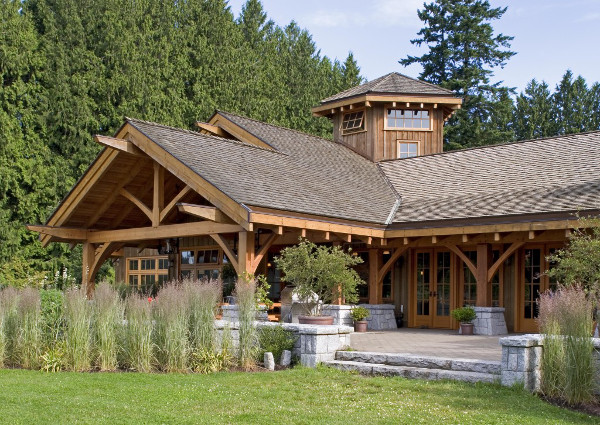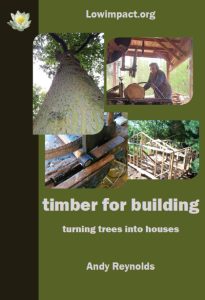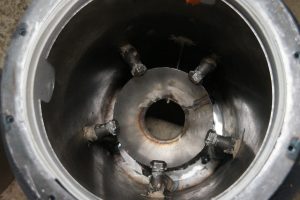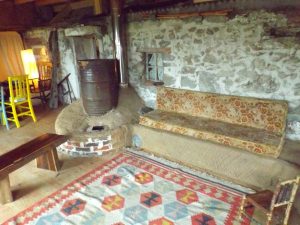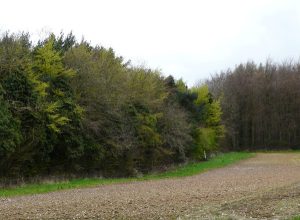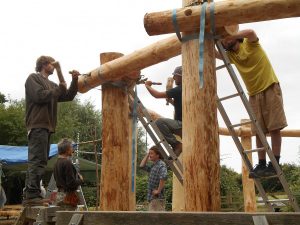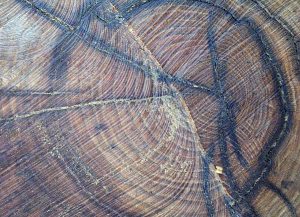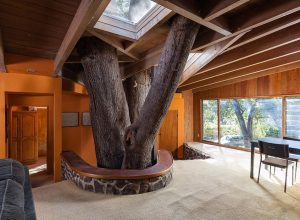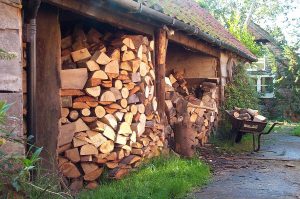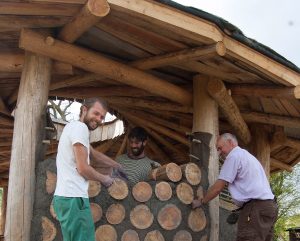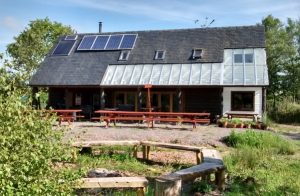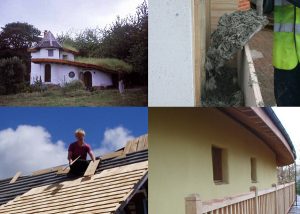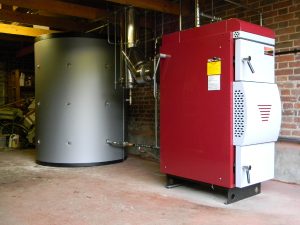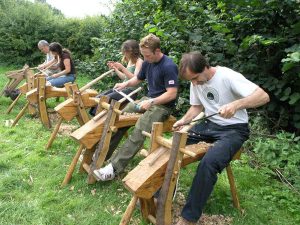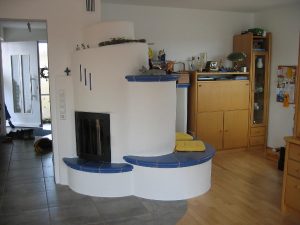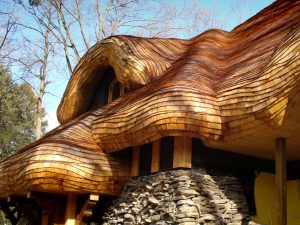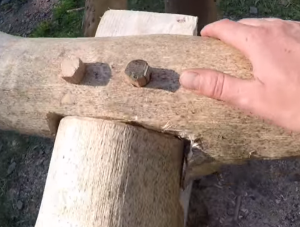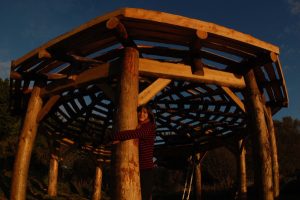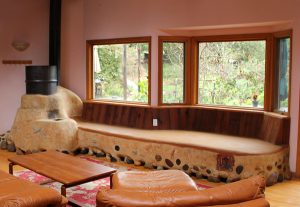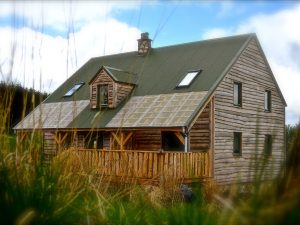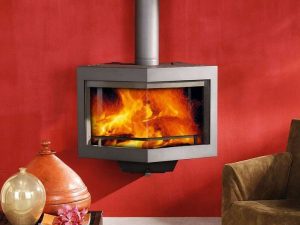We’ve noticed from comments on our blogs and on social media that environmentally-conscious Americans have a slightly different attitude to using trees as a renewable resource – whether for firewood or for timber – than that prevalent in the UK. The concerns that we’ve heard from across the pond is that trees are beautiful, majestic things, and that it’s a shame to fell them for our own use. However, the attitude at Lowimpact.org is that trees are a sustainable, renewable way to heat our homes, and ultimately, to build them – as long as we plant trees to replace those harvested. The alternatives to using trees for construction or for heating are usually much worse for ecology.
While they’re alive, trees provide habitat for a huge range of creatures – they are the climax vegetation all over the world apart from deserts, tundra or ice. In other words, they represent what nature most wants to be, when conditions allow. When they’re harvested, yes, if they are burnt as firewood, they will release carbon into the atmosphere – but it will be absorbed by living trees, to be released again later, in a sustainable and eternal cycle, as long as we don’t harvest more than we plant. But it is when trees are used to provide timber for building homes that they really come into their own – timber houses become carbon sinks, as we lock up carbon in our homes. Why sequester carbon underground (including by cutting down trees and burying them – one idea that has been put forward) when we can we can sequester carbon in our homes?
This also means that we don’t have to fire billions of bricks in kilns, and, most importantly, that we don’t have to use concrete. The cement industry developed from the lime industry. Limestone used to be burned all over the world to produce building limes. Carbon was given off during burning, but lime takes carbon back from the air to set. Impurities were deliberately added to cement so that it didn’t need to take carbon from the air to set – it could get the carbon, or other elements, from the added impurities instead. That meant that cement could be used in all weathers, and it set much more quickly than lime. Consequently, the lime industry is tiny compared to what it was. We’d like to see it revived, but currently it is completely overshadowed by the cement industry.
So we were very interested to receive this article from Tyler Linden – an American who builds homes using timber. We’re with Tyler on this one – see what you think. Over to Tyler:
Environmentally Friendly Timber Framing & Home Planning
Traditional Building Methods vs. Green Timber Framing
The word “green” may not be the first thing that comes to mind when we mention timber framing construction, because building from wood seems inherently unsustainable. However, timber framing is surprisingly eco-friendly compared to other building methods.
How can this be? Consider the environmental impact of some other home-building construction styles:
- Brick making is using up non-renewable resources and causing atmospheric pollution. In the beginning of the brick making process, clay and shale are mined from the earth’s surface and are then fired in a kiln. During this process, a high quantity of toxic elements are transmitted into our atmosphere, causing serious health and environmental problems; including as stunting kid’s growth hurting local crops, and even causing acid rain in some highly industrial areas.
- Concrete production also leads to environmental damage, especially CO2 emissions. Just like brick making, manufacturing concrete uses naturally occurring materials to create a very hard surface good for building. This involves taking materials from the earth that we cannot give back or replace, while also polluting the environment. Concrete production can lead to surface runoff, which causes water pollution in our oceans and rivers along with soil erosion. Most importantly, concrete production is currently one of the major carbon dioxide producers in the world, ultimately contributing to climate change and forever damaging the world we live in.
Environmental Benefits of Sustainable Timber Framing
So why is timber framing any better? There are countless ways in which you can acquire timber that have little to no impact on the environment long-term. Consider:
-
- The great thing about using timber is that trees are a renewable resource. Plan on using new timber for your home? Lessen your environmental impact by replanting trees where you took them first.
- Timber can be locally sourced. If you can source your timber from a local area or sawmill, you can save the environment from pollution caused by the transport of goods.
- Using reclaimed or recycled timber is another great option. It’s fairly easy to get your hands on recycled timber from old barns, boatyards, or salvage yards. Reclaimed timber comes from trees that have been salvaged afterwards, making it more sustainable. Reclaimed & recycled timber can also add extra quaintness and charm to your house.
Centering your home around green timber framing decisions
Timber framing itself is sustainable, because you’re using a renewable resource. But if you want to do even more to protect the environment and reduce your carbon footprint, you can.
When building a timber frame home, you are in total control of the process. This gives you the ability to oversee every aspect, and make sure you are making the best environmental decisions. Now let’s talk about some decisions you can make during the building phase to help the earth while creating your dream home.
- Build small to lower your energy usage. Many timber frame homes are built on a large scale, but they definitely don’t have to be. How much space do you really need to be comfortable in your home? Rather than building large, build smart. Incorporate hidden storage areas to help organize your belongings & hide things when you don’t need them. Smaller floor plans help lower energy usage, costs and overall waste.
- Incorporate SIP’s (Structural Insulted Panels) in your building system. These panels can be fabricated to fit just about any construction and are very durable and highly energy efficient. Overall, they are similar in price to other building methods and will help you save you money in the long run, while producing a lower environmental impact.
- Work towards building a LEED certified building. According to their site, “The LEED plaque on a building is a mark of quality and achievement in green building.” This green rating system put forth by The Leadership in Energy and Environmental Design is the most widely used in the world, and helps promote less environmental stress, and a healthier people & planet.
Sustainable timber framing can be a great environmentally friendly option when thinking about building your new home. In the end, it’s our responsibility to lessen our environmental impact as much as possible, and with a little advice from the steps above, timber framed homes can be a great choice for both our planet and people.

